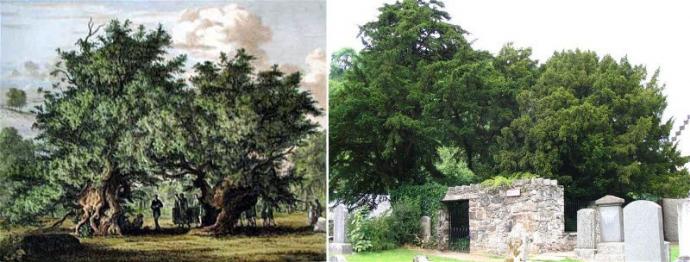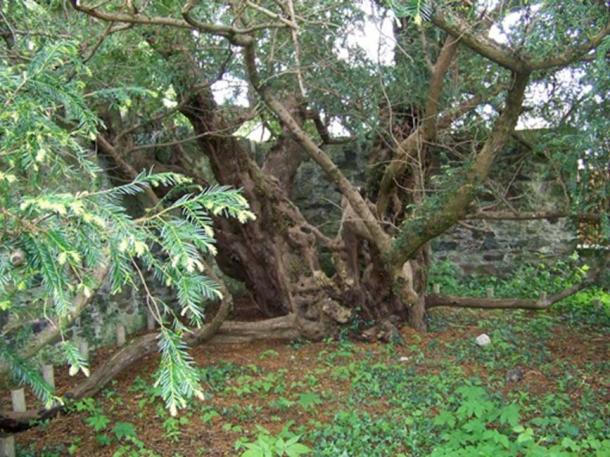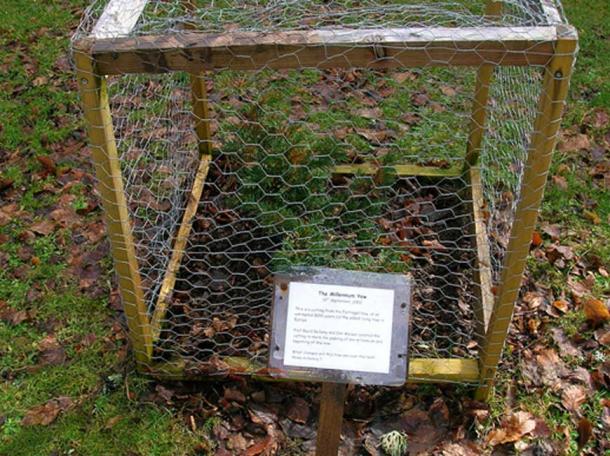Brainless Tourists Slaughter 5,000-Year-Old Sacred Scottish Tree
Trees are a natural sight, and for a long time certain species can live. Nevertheless, one particular tree is of great importance and is considered to be holy at its home country of Scotland, and it is believed to be up to 5,000 years old.
This ancient Scottish tree, The Fortingall Yew, is located on the Glenlyon Estate in Perthshire, and could possibly well be the oldest tree in Europe.
While this may sound impressive, it’s status and media presence may also be its downfall. Scientists have released a claim that this sacred tree could die in less than 50 years’ time due to brainless tourists tearing off its branches for souvenirs, which is causing it to weaken.
This amazing yew tree is the oldest one left in the UK and potentially even Europe. However, despite it being even caged inside the Fortingall Churchyard in Perthshire, it has been left in increasingly bad health due to obnoxious tourists.
Tourists are taking it upon themselves to chop the branches off to keep as a souvenir. The tree is under stress from being attacked by so many people.
The tree warden for Fortingall, Neil Hooper, has said in a statement that a metal plaque had been forced down and twisted flat.
Those metal plaques aren’t very pliable and so to bend it in such a way would have taken considerable force, presumably by someone climbing into the enclosure.
In addition to taking parts of the tree and ripping it to shreds, visitors also think it’s alright to climb over the clearly marked boundaries so they can tie beads and ribbons to the tree’s branches.

An Awe-Inspiring Tree
So, what makes this tree so special? Well, apart from the age of it, it is actually an incredibly important tree. For centuries, it has been part of a Christian pilgrimage.
Many pilgrims hold the tree as a landmark of early Christianity – believing that this is the tree that provided shade at the birth of Pontius Pilate, who is said to have been born in the village during the Roman occupation and played beneath the Yew as a boy, before he grew up and ordered the crucifixion of Jesus Christ.
Therefore the tree has quite a bit of religious significance. However, some skeptics have doubted the truthfulness of this story.
Ignoring the potential myths though, this tree is still a miracle of nature. Why? Four years ago, scientists in Scotland announced that the sacred tree was undergoing a sex change.
The Fortingall Yew had always been recorded as a male tree. However, in 2015 someone spotted that it had started sprouting berries, which is something only female yew trees do.
While it isn’t uncommon for yew trees to change sex as they often do it to increase chances of survival, the odd thing here is that a tree of this age and stature would do such a thing now, it’s completely unheard of!
Can it be saved?
Plenty of people will probably be wondering; why can’t everyone just stop destroying the tree and it will be fine? While this would work in a perfect world, it simply isn’t that simple.
Due to it’s worsening poor health, the tree could keel over at any moment, no one is sure when though. It may happen in 50 or 300 years, no one can say.

Despite the bleak outlook, there is still hope! The Church Yew Tree project is a 10-year program that is working in partnership with the Royal Botanic Garden Edinburgh.

It plans to plant seedlings from the Fortingall Yew at various Churches in and around Perthshire and Angus, and also at the Royal Botanic Garden. They hope to have successfully identified around 20 churchyards which will accept new saplings by next year, 2020.





